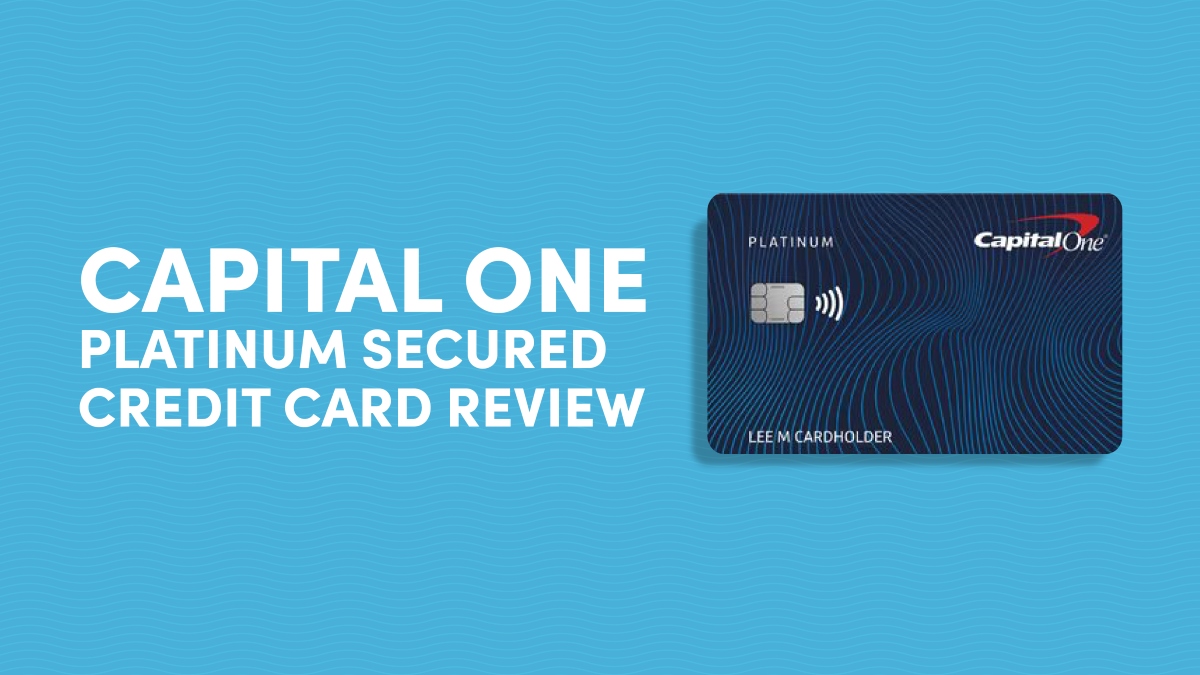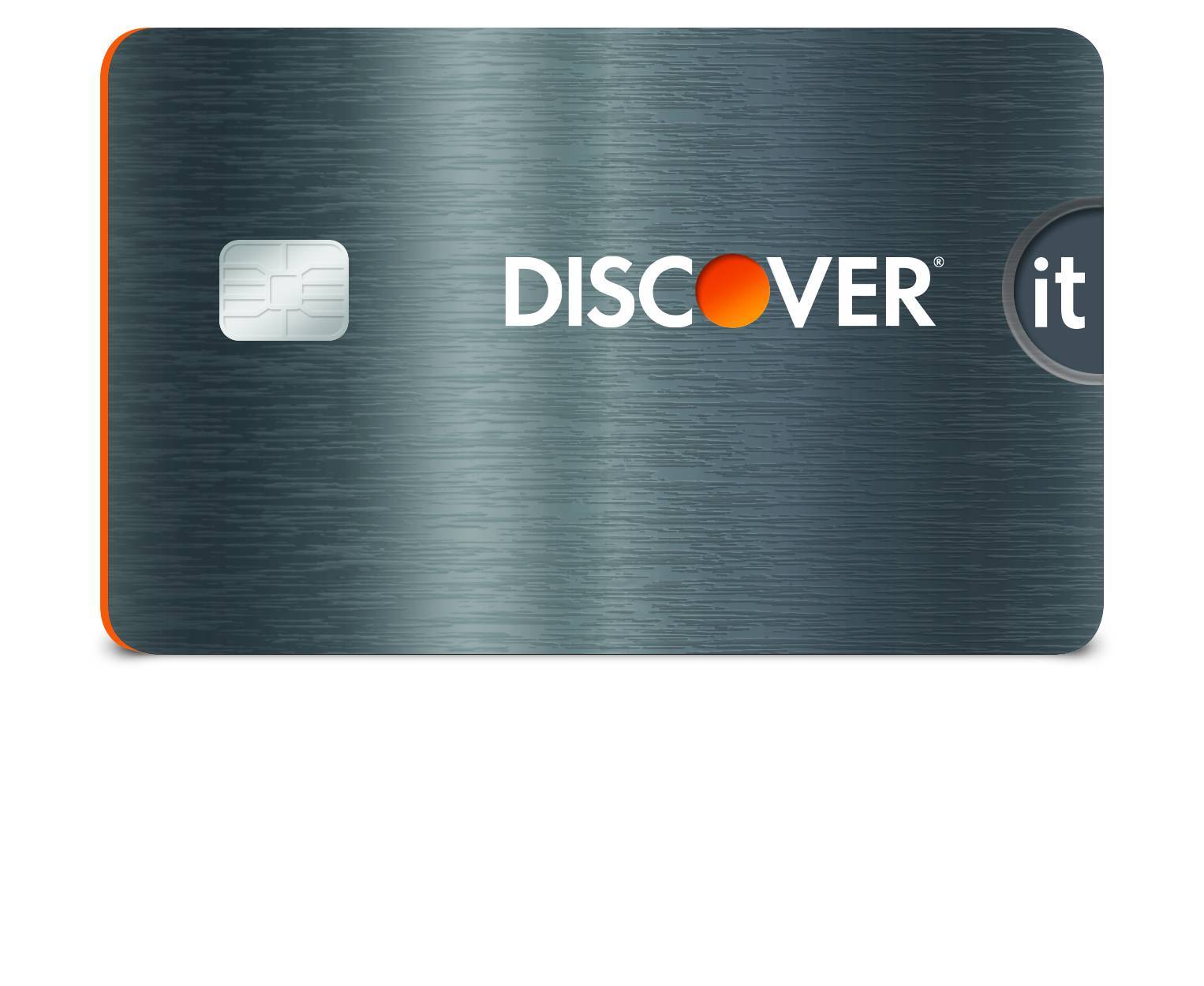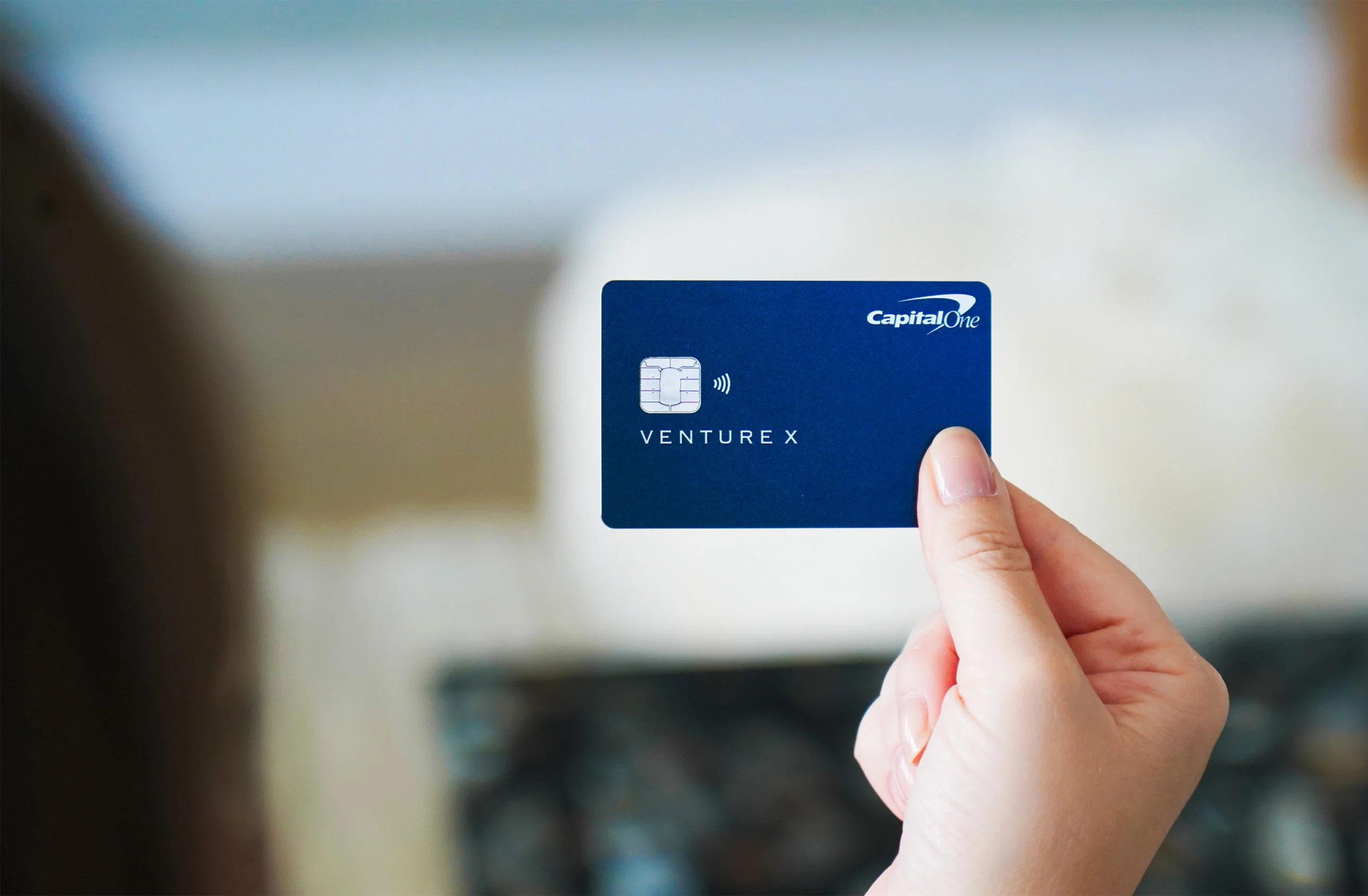Home>Finance>How Long Does Capital One Take To Convert A Secured Card To Unsecured?


Finance
How Long Does Capital One Take To Convert A Secured Card To Unsecured?
Published: March 1, 2024
Find out how long Capital One takes to convert a secured card to unsecured. Get expert insights on managing your finances and credit cards. Discover the process and timeline here.
(Many of the links in this article redirect to a specific reviewed product. Your purchase of these products through affiliate links helps to generate commission for LiveWell, at no extra cost. Learn more)
Table of Contents
Introduction
Secured credit cards have long been a valuable tool for individuals aiming to build or rebuild their credit. These cards require a cash deposit as collateral, which serves as a safety net for the card issuer in case the cardholder defaults on payments. However, as the cardholder demonstrates responsible credit usage and a positive payment history, they may become eligible for an unsecured credit card.
Capital One, a prominent financial institution, offers secured credit cards with the potential for conversion to unsecured status. This transition can be a significant milestone for cardholders, as it signifies an improvement in their creditworthiness and financial standing. Understanding the process and timeline for this conversion is crucial for individuals seeking to elevate their credit status and access more favorable credit options.
In this article, we will delve into the key aspects of secured and unsecured credit cards, explore the process through which Capital One converts a secured card to unsecured, and provide insights into the factors influencing the timeline for this conversion. Additionally, we will outline a typical timeline for Capital One's conversion process and offer valuable tips to help individuals navigate this journey successfully. By shedding light on this topic, we aim to empower individuals with the knowledge needed to make informed decisions about their credit journey and maximize their financial opportunities.
What is a Secured Credit Card?
A secured credit card is a financial tool designed for individuals who are either new to credit or are working to rebuild their credit history. Unlike traditional unsecured credit cards that are issued based on the cardholder’s creditworthiness, secured credit cards require a cash deposit as collateral, typically equal to the card’s credit limit. This deposit serves as a form of protection for the card issuer in the event that the cardholder fails to make payments.
Secured credit cards function much like regular credit cards, allowing cardholders to make purchases, build credit, and establish a payment history. The key difference lies in the collateral requirement, which mitigates the risk for the card issuer and provides an opportunity for individuals with limited or damaged credit to access a line of credit.
It’s important to note that while secured credit cards require a deposit, they are not prepaid cards. The deposit is held as security and does not directly cover the cardholder’s charges. Responsible use of a secured credit card, including making timely payments and maintaining a low credit utilization ratio, can help individuals improve their credit score over time.
Secured credit cards are often recommended for those who are new to credit, have experienced credit challenges in the past, or are looking to establish a positive credit history. They can serve as a stepping stone to eventually qualifying for an unsecured credit card, which typically offers higher credit limits and may come with additional benefits such as rewards programs and lower interest rates.
What is an Unsecured Credit Card?
An unsecured credit card is a traditional line of credit that does not require the cardholder to provide collateral in the form of a cash deposit. Unlike secured credit cards, which are backed by a security deposit, unsecured credit cards are issued based on the applicant’s creditworthiness, income, and overall financial profile.
Individuals who qualify for an unsecured credit card are extended a line of credit without the need for a cash deposit. The credit limit is determined by the card issuer and is based on the applicant’s credit history, income, and other relevant factors. Unsecured credit cards offer flexibility and convenience, allowing cardholders to make purchases and carry a balance, subject to the card’s terms and conditions.
Unsecured credit cards often come with a range of features and benefits, such as rewards programs, cash back incentives, travel perks, and introductory 0% APR offers. These cards are typically targeted at individuals with established credit histories and responsible financial habits. Cardholders are expected to make regular payments on their outstanding balances, and the card issuer may extend credit limit increases based on the cardholder’s payment history and overall creditworthiness.
Qualifying for an unsecured credit card signifies a significant milestone in an individual’s credit journey, as it demonstrates a level of financial stability and responsible credit management. Cardholders with unsecured credit cards have the opportunity to build a positive credit history, access higher credit limits, and enjoy the benefits and conveniences that come with traditional credit cards.
It’s important to note that while unsecured credit cards do not require a cash deposit, cardholders are still responsible for managing their credit accounts prudently, making timely payments, and keeping their credit utilization in check to maintain a healthy credit profile.
How Does Capital One Convert a Secured Card to Unsecured?
Capital One provides a pathway for individuals with secured credit cards to potentially transition to unsecured credit cards, offering the opportunity to upgrade their credit profile and access additional financial benefits. The process of converting a secured card to unsecured with Capital One involves a series of steps and considerations to determine eligibility and facilitate the transition.
Capital One typically reviews the account activity and payment history of secured cardholders to assess their credit management behavior and financial progress. Individuals who demonstrate responsible credit usage, timely payments, and improved creditworthiness may become candidates for the conversion to an unsecured credit card.
Upon meeting the criteria for consideration, Capital One may initiate the conversion process, which often involves the following key steps:
- Evaluation of Credit History: Capital One reviews the cardholder’s credit history, including payment behavior, credit utilization, and overall financial responsibility. A positive credit history and a track record of on-time payments can significantly influence the decision to convert a secured card to unsecured.
- Assessment of Account Standing: The cardholder’s overall account standing and relationship with Capital One are taken into account. Factors such as the length of the banking relationship, account management, and any associated accounts with the financial institution may contribute to the decision-making process.
- Communication with Cardholder: If a secured cardholder is deemed eligible for the conversion, Capital One may reach out to the cardholder to provide details about the transition process, any changes in terms or benefits, and the timeline for the conversion.
- Issuance of Unsecured Card: Upon approval, Capital One issues an unsecured credit card to the cardholder, replacing the secured card. The cardholder may receive a new card with a higher credit limit and access to additional features and benefits associated with unsecured credit cards.
- Adjustment of Security Deposit: In the case of a successful conversion, the security deposit held for the secured card is typically refunded to the cardholder, minus any outstanding balances or fees owed.
It’s important for secured cardholders to maintain consistent, responsible credit behavior and keep their accounts in good standing to enhance their chances of being considered for the conversion to an unsecured credit card with Capital One. By demonstrating financial responsibility and prudent credit management, individuals can position themselves favorably for this transition and unlock the potential for broader credit opportunities and financial flexibility.
Factors that Affect the Timeline for Conversion
The timeline for the conversion of a secured credit card to an unsecured card with Capital One can be influenced by several key factors, each playing a significant role in determining the eligibility and timing of the transition. Understanding these factors can provide insight into the process and help individuals manage their expectations regarding the timeline for conversion.
- Credit History and Payment Behavior: The cardholder’s credit history and payment behavior are pivotal factors that can impact the timeline for conversion. Consistent, on-time payments and responsible credit management demonstrate financial discipline and may expedite the transition to an unsecured card.
- Length of Credit History: The duration of the cardholder’s credit history with Capital One and other creditors can influence the timeline for conversion. A longer credit history with positive credit management may signal a higher level of creditworthiness, potentially expediting the transition process.
- Credit Utilization and Debt Management: Effective management of credit utilization and overall debt levels can contribute to a positive credit profile and may expedite the conversion process. Maintaining a low credit utilization ratio and managing existing debts responsibly can demonstrate financial prudence.
- Account Standing and Relationship with Capital One: The cardholder’s overall standing and relationship with Capital One, including the management of other accounts and financial products, can impact the timeline for conversion. A positive history of engagement and account management may facilitate a smoother transition.
- Financial Stability and Income: Demonstrating financial stability and a steady income stream can play a role in expediting the conversion process. A reliable income source and sound financial standing may bolster the cardholder’s creditworthiness.
- Communication and Documentation: Clear and timely communication with Capital One, as well as the provision of any requested documentation or information, can contribute to a streamlined conversion process. Responding promptly to inquiries and providing necessary documentation may help expedite the assessment of eligibility.
It’s essential for secured cardholders to maintain a proactive approach to their credit management and address any areas of improvement to enhance their eligibility and potentially expedite the timeline for conversion. By focusing on responsible credit behavior, maintaining a positive credit profile, and engaging with Capital One to demonstrate their creditworthiness, individuals can position themselves favorably for the transition to an unsecured credit card.
Typical Timeline for Capital One to Convert a Secured Card to Unsecured
The timeline for Capital One to convert a secured credit card to an unsecured card can vary based on individual circumstances and the specific factors influencing the conversion process. While there is no definitive timeline that applies universally to all cardholders, understanding a typical timeframe for this transition can provide valuable insight for individuals seeking to upgrade their credit cards.
On average, the process of converting a secured card to unsecured with Capital One may unfold over several months to a few years, depending on the cardholder’s credit management and financial progress. It’s important to note that this timeline is an approximation, and actual timelines can differ based on individual credit profiles and the criteria established by Capital One for the conversion.
The following represents a typical timeline for the conversion process:
- Initial Secured Card Activation: The cardholder opens a secured credit card account with Capital One and begins using the card to make purchases and build a credit history.
- Credit Building and Responsible Usage: Over the course of several months to a year or more, the cardholder demonstrates responsible credit usage, makes consistent, on-time payments, and manages their credit account prudently to establish a positive payment history and credit profile.
- Assessment of Eligibility: Capital One periodically reviews the secured cardholder’s account activity, credit history, and overall creditworthiness to assess their eligibility for conversion to an unsecured card. This review may occur at varying intervals, depending on the individual’s credit progress and Capital One’s internal policies.
- Communication and Notification: If the cardholder meets the criteria for consideration, Capital One may reach out to communicate details about the potential conversion, any changes in card terms or benefits, and the next steps in the process.
- Conversion and Issuance of Unsecured Card: Upon approval, Capital One converts the secured card to an unsecured card, issues a new unsecured credit card to the cardholder, and may refund the initial security deposit, minus any outstanding balances or fees.
- Enjoying the Benefits of an Unsecured Card: With the transition complete, the cardholder gains access to the benefits and features associated with an unsecured credit card, including potentially higher credit limits, rewards programs, and other perks.
It’s important for secured cardholders to maintain consistent, responsible credit behavior and engage proactively with Capital One to enhance their chances of being considered for the conversion to an unsecured credit card within a reasonable timeframe. By demonstrating financial responsibility and prudent credit management, individuals can position themselves favorably for this transition and unlock the potential for broader credit opportunities and financial flexibility.
Tips for a Successful Conversion
For individuals seeking to transition from a secured credit card to an unsecured card with Capital One, implementing strategic steps and maintaining responsible credit habits can significantly enhance the likelihood of a successful conversion. By proactively managing their credit and engaging with Capital One, cardholders can position themselves favorably for the transition to an unsecured credit card.
Here are valuable tips to facilitate a successful conversion:
- Consistent, On-Time Payments: Making timely payments on the secured credit card is crucial for building a positive payment history and demonstrating responsible credit behavior. Consistency in payment habits can strengthen the cardholder’s credit profile and increase the likelihood of being considered for an unsecured card.
- Manage Credit Utilization: Keeping credit utilization low by using only a portion of the available credit limit can signal responsible credit management. Aim to maintain a utilization rate below 30% to showcase prudent credit usage.
- Regular Account Reviews: Periodically review the secured credit card account to ensure accuracy, monitor for any unauthorized charges, and stay informed about the account’s status. Addressing any discrepancies promptly can help maintain a positive account standing.
- Engage with Capital One: Stay in communication with Capital One, respond to any inquiries or requests for information promptly, and seek clarity on the criteria and timeline for conversion. Proactive engagement can demonstrate a commitment to responsible credit management.
- Build a Positive Credit History: Beyond the secured card, consider other avenues to build a positive credit history, such as maintaining diverse credit accounts, managing installment loans responsibly, and avoiding excessive credit inquiries.
- Monitor Credit Reports: Regularly monitor credit reports from major credit bureaus to identify any inaccuracies, track credit progress, and address any issues that may impact creditworthiness. Ensuring the accuracy of credit reports is essential for a successful conversion.
- Financial Stability and Income: Demonstrating financial stability and a reliable income source can bolster creditworthiness. Maintain steady employment and a consistent income stream to showcase financial responsibility.
- Prepare for Unsecured Card Terms: Familiarize yourself with the potential terms and features of an unsecured credit card, including interest rates, rewards programs, and annual fees. Understanding these aspects can help in managing the new unsecured card effectively.
By implementing these tips and maintaining a proactive approach to credit management, individuals can enhance their prospects for a successful conversion from a secured credit card to an unsecured card with Capital One. It’s essential to stay informed about the process, engage with the card issuer, and demonstrate responsible credit behavior to maximize the potential for a smooth and favorable transition.
Conclusion
The journey from a secured credit card to an unsecured card with Capital One represents a significant milestone for individuals looking to improve their credit standing and access enhanced financial opportunities. Understanding the process and timeline for this conversion, as well as the key factors that influence eligibility, is essential for individuals navigating their credit journey.
Secured credit cards provide a valuable entry point for individuals with limited or damaged credit histories, offering a pathway to demonstrate responsible credit behavior and build a positive payment track record. As cardholders progress and showcase financial discipline, the potential for conversion to an unsecured credit card becomes an achievable goal, unlocking access to higher credit limits, rewards programs, and additional credit card benefits.
Capital One’s process for converting a secured card to unsecured involves careful evaluation of the cardholder’s credit history, payment behavior, and overall creditworthiness. By maintaining consistent, on-time payments, managing credit utilization, and engaging proactively with Capital One, individuals can position themselves favorably for a successful transition.
It’s important for secured cardholders to implement strategic credit management practices, stay informed about their credit progress, and address any areas of improvement to enhance their eligibility for conversion. By demonstrating financial responsibility and prudent credit behavior, individuals can maximize their potential for a smooth and timely transition to an unsecured credit card with Capital One.
Ultimately, the conversion from a secured card to unsecured signifies a positive step in an individual’s credit journey, reflecting their commitment to financial growth and credit improvement. By leveraging the insights and tips outlined in this article, individuals can navigate this transition with confidence, positioning themselves for broader financial opportunities and a strengthened credit foundation.














